A Visit to the Swedish Emigrant Institute
The House of Emigrants, “Utvandrarnas Hus” in Swedish, was in trouble last year when local politicians and The Swedish Emigrant Institute (the national organization behind the House of Emigrants) fought over how to develop the business.
-
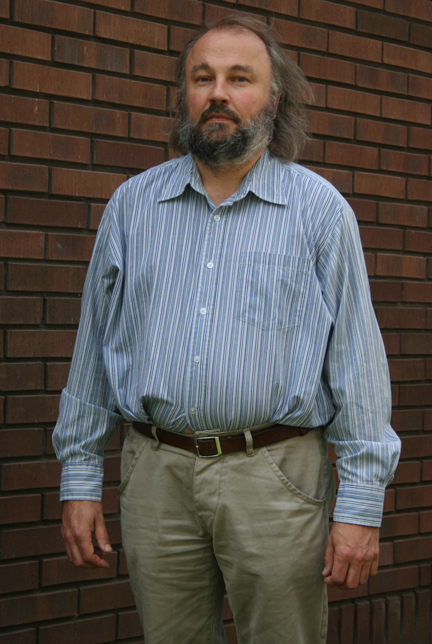 Lars Hansson, Director of Utvandrarnas Hus in Växjö.
Lars Hansson, Director of Utvandrarnas Hus in Växjö. -
-
“Yes, well, last year was a turbulent period but we’re slowly coming out of it now,” says Director of Utvandrarnas Hus, Lars Hansson. “Växjö Kommun didn’t want to pay money to us solely, but wanted to create a separate corporation, to which our board of directors said ‘no.’” Today Utvandrarnas Hus has a new board of directors and has received several grants from, among others, Barbro Osher’s Pro Suecia Foundation and Riksbanken. What it means is that Utvandrarnas Hus, at least the academic part of it, will remain in Växjö.
-
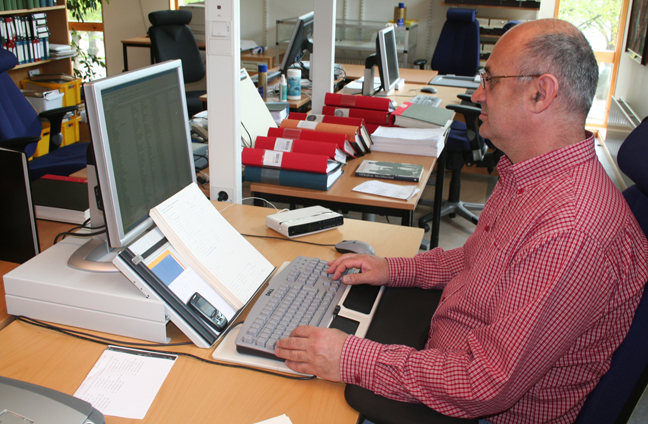 Almir Selimbegovic, an immigrant from Bosnia, works at Utvandrarnas Hus. He digitalizes all records.
Almir Selimbegovic, an immigrant from Bosnia, works at Utvandrarnas Hus. He digitalizes all records. -
-
Veiled by leafy trees, Utvandrarnas Hus nestles near a picturesque lake in the heart of Växjö. Established in 1967, the dark building comprises an archive, library, museum and research center. Here anyone who is interested in genealogy can trace their family, but it is also an important center for academics.
“This is a huge tourist attraction of course,” says Hansson. “We have a mix of Swedes, Swedish-Americans as well as other nationalities coming from near and far. One goal is to get people up in the archives; we’re working on breaking that barrier.”
Private research, Hansson believes, can lead to academic research, which in turn can yield important discoveries.
“The Swedish emigration to America is the most important part of what we do, that we can’t deny, but I also don’t think that part can ever be threatened. And it’s always interesting to look at our kinds of emigration, because they all help us understand emigration in general as well as the immigration we have to Sweden today,” says Hansson. -
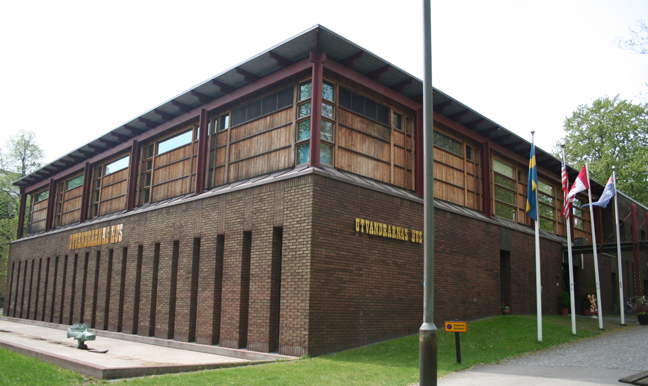 Utvandrarnas Hus in Växjö.
Utvandrarnas Hus in Växjö. -
The unknown emigrations
Most of us know of Karl-Oskar and Kristina, and perhaps that’s how we associate Swedish emigration, but Lars Hansson wants to shine a light on other emigrants, too.
“At the same time as Karl-Oskar and Kristina, there was also a huge urban emigration to the U.S. as well as a wave of Swedes emigrating to Denmark and Germany, about 100,000 of them, actually. These were poorer people who were picked up by agents. The girls from the farms in Sweden had red-and-white kerchiefs on their heads —that’s how the agents recognized them once they stepped off the boat in Copenhagen, for example. But these kerchiefs were quickly changed to hats, as Danish women were embarrassed to be seen with their maids unless they wore proper hats. When these girls later returned to Sweden, they were looked down upon; it was said they had gotten ‘bad habits’ abroad. People were most certainly jealous of these girls who returned in expensive headgear. Of the Swedes who emigrated to the United States, about 20% returned to Sweden. As a token of success, they would bring over not a new hat, but a car.”
Another lesser-known emigration is the one from America to Sweden when Ford and General Motors had factories in Stockholm. Continues Hansson: “The cars were put together here in Sweden and more than likely, Swedish-Americans were sent from the U.S. since they understood the language, but there were probably some Americans in the batch, too.” -
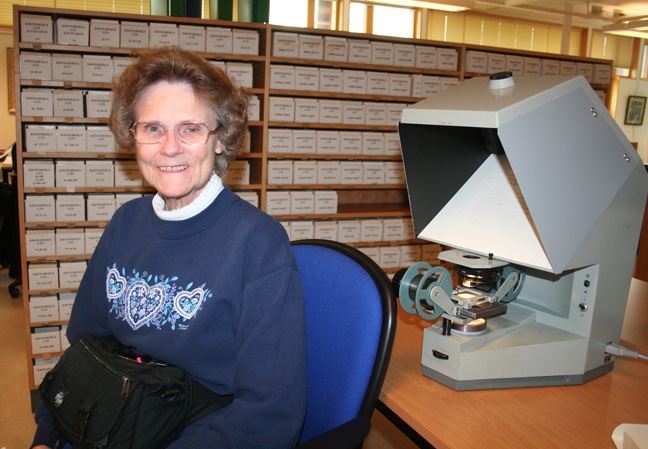 Joy Watkins from Arlington, Texas, has traced her family to the Växjö region and is using Gen-Line at Utvandrarnas Hus. "I am a bit stuck here," she says. "I've lost a lady and we cannot seem to find her." Watkins began genealogy in 1995. "For Americans interested in their Swedish ancestors, the most important piece of knowledge you can have is what parish they came from," she says.
Joy Watkins from Arlington, Texas, has traced her family to the Växjö region and is using Gen-Line at Utvandrarnas Hus. "I am a bit stuck here," she says. "I've lost a lady and we cannot seem to find her." Watkins began genealogy in 1995. "For Americans interested in their Swedish ancestors, the most important piece of knowledge you can have is what parish they came from," she says. -
Utvandrarnas Hus in the future
The future of Utvandrarnas Hus, however uncertain it may be at the moment, depends a lot on national and transatlantic collaborations.
“We work with the Swedish-American Center in Karlstad and the Swenson Center located at Augustana College in Illinois. We have to work globally. We also have a lot of projects outside of Växjö, one is an exhibition that opens in Östergötland on Swedish woodmen working in Canada, and in July the exhibition ‘Det Nya Landet’ will open in Eksjö, at a Utvandrarnas Hus branch there.”
Hansson explains that all exhibitions focus on emigration research, trying to popularize it.
“It’s important for us to attract academics,” he says, “because we learn from history and understand today’s immigration from it. I also foresee us working more together with educational sections like ABF (Arbetarnas bildningsförbund or the Workers Educational Association), where we get to share resources. My ambition, really, is to create an Utvandrarnas Hus that functions much more on a national basis. Because every time I travel, I realize just how interested people are in Utvandrarnas Hus.” -
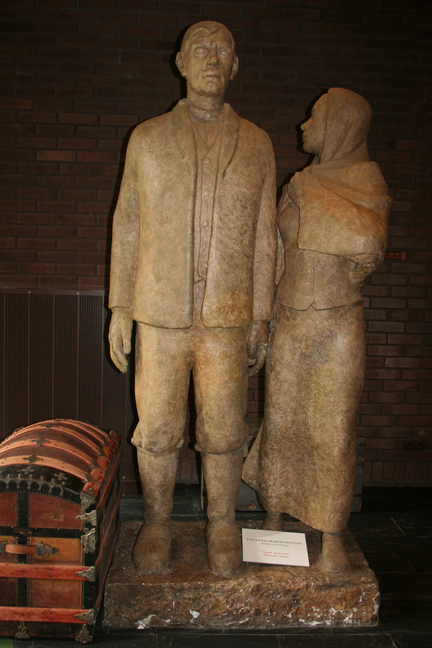 Karl-Oskar and Kristina - your typical Swedish emigrants? Maybe not.
Karl-Oskar and Kristina - your typical Swedish emigrants? Maybe not. -
Facts
· The Swedish Emigrant Institute was founded in 1965. Its initial purpose was to preserve records, interviews and memorabilia relating to the period of major Swedish emigration between 1846 and 1930, when 1.3 million (about 20%) of the Swedish population left the country.
· Of the European countries, only England and Norway surpassed Sweden’s emigration in proportion to the population of the home country.
· Swedes settled down in cities and helped develop the industry. They played an important role in building certain cities, like Chicago, the Swedish center in the U.S. At the end of the 1800's, the population of Göteborg, the second largest city in Sweden, was surpassed by Chicago’s population of first and second generation Swedes, about 150,000.
· 61 % of the Swedish-born Americans lived in cities in 1910. The labor market of the big city had more to offer the poor immigrants than the farm regions. A great number of them worked in the building industry. There is a saying that "the Swedes built Chicago."
· The library at the House of Emigrants contains a comprehensive, unique and growing collection of more than 25,000 volumes.
· About 24,000 people visit the House of Emigrants annually. -
For more information: www.utvandrarnashus.se
-
-
